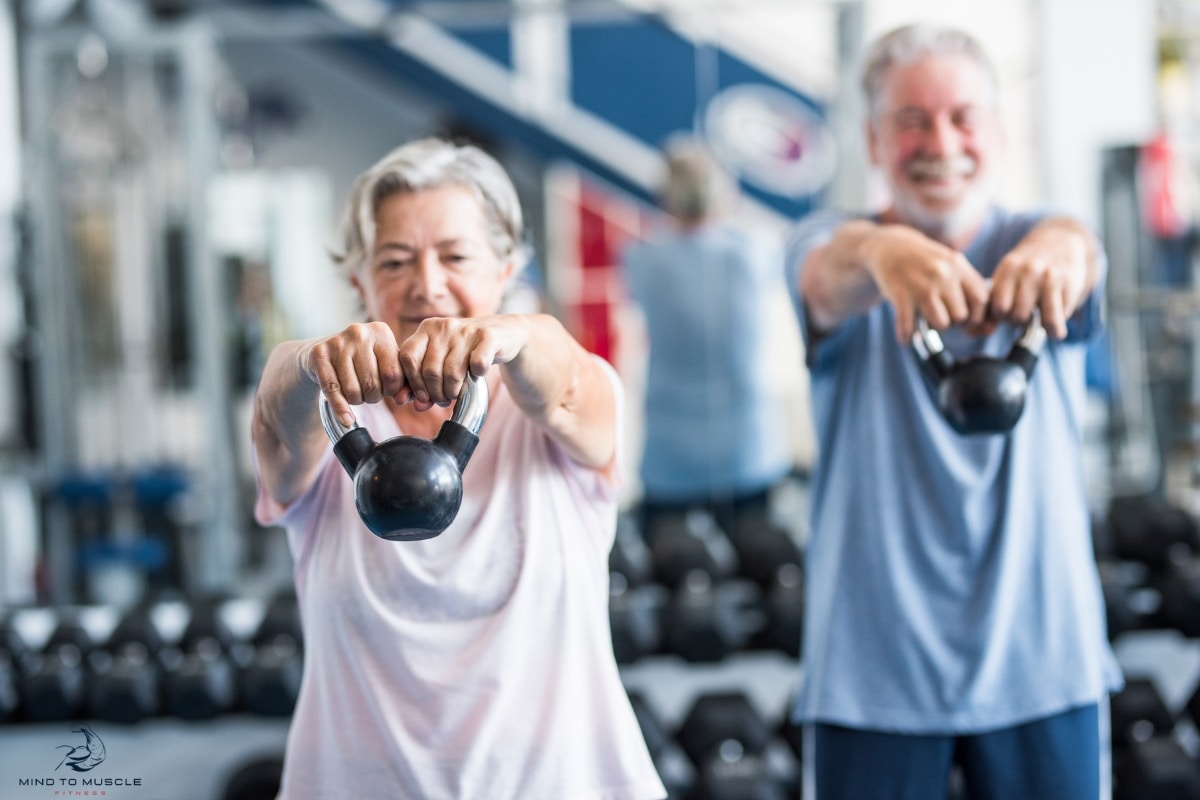
Advanced Kettlebell Training Techniques
Are you ready to take your fitness to new levels with advanced kettlebell training? It’s not like normal strength training. Kettlebells bring a new level of challenge that can change your usual routine.
They’ve been used for a long time, especially by the Russian military. Now, they’re a big hit in the U.S. People love them because they give a full-body workout. This includes improving your strength, stamina, balance, and how flexible you are.
In this guide, we’ll go over kettlebell techniques in depth. We’ll look at specific exercises and routines to boost your fitness. Whether you want to nail the Turkish Get Up, improve your swings, or make your core exercises better with kettlebells, we’ve got you covered.
Key Takeaways
- Introduction to advanced kettlebell training techniques and their benefits.
- Historical background and rise of kettlebell training in the United States.
- Overview of foundational exercises and core activation movements.
- Importance of proper form and technique to avoid common mistakes.
- Details on designing routines for advanced kettlebell workouts.
- Significance of progressive overload for continuous improvement.
- How to integrate kettlebells into functional fitness routines.
The Importance of Proper Kettlebell Form
Perfect form in kettlebell workouts is key. It helps you get the most out of your exercises. This is while staying safe from injuries. Studies show that using the right technique boosts your strength, power, and endurance.
Common Mistakes to Avoid
If you’re not careful, you can pick up bad form in kettlebell exercises. Let’s look at what to steer clear of:
- Incorrect Posture: Keeping good posture is crucial. Bad posture can hurt your back and joints.
- Poor Grip: Make sure you have a strong grip. It prevents the kettlebell from slipping, reducing injury risks.
- Improper Breathing: Breathing right is important for stability. Breathe in when relaxing and out when working hard.
Fundamental Movements for Advanced Techniques
First, you should nail the basic movements before moving to the fancy ones. These basics are essential for any kettlebell routine. They’re the foundation for more complex moves:
- Kettlebell Swing: A study from the J Strength Cond Res journal underlines the importance of this move. It’s key for building strength and power.
- Goblet Squat: It boosts your leg strength and helps with squats. This was noted in a study published in Phys Ther Rev in 2015.
- Turkish Get-Up: This exercise improves your balance and coordination. It’s a must for moving forward in kettlebell training.
Sticking with these basics improves advanced kettlebell workouts. Being consistent and precise with these steps is crucial. It sets you up for safe and effective growth in your routine. By avoiding common mistakes and focusing on the basics, you’ll see major gains in strength, power, and overall fitness from your kettlebell workouts.
Kettlebell Workout Routines for Advanced Users
Advanced kettlebell workouts need careful planning. Think about key factors. Designing your workouts helps you get the most from your training.
Designing Your Routine: Key Considerations
When making your kettlebell routines, keep these in mind:
- Workout Frequency: Mix exercise days and rest days. This stops overtraining and injuries.
- Intensity: Match weights and speed with your fitness and goals. High intensity is fine, but listen to your body.
- Volume: The number of sets and reps should grow as you get better.
- Exercise Selection: Choose exercises that work different muscles. Combine compound and isolation movements.
Sample Weekly Kettlebell Plan
Here’s a week plan for advanced kettlebell work. It boosts strength and overall fitness:
| Day | Exercise | Reps | Sets |
|---|---|---|---|
| Monday | Kettlebell Swings | 15 | 4 |
| Tuesday | Kettlebell Clean and Press | 10 | 3 |
| Wednesday | Rest or Light Active Recovery | – | – |
| Thursday | Kettlebell Snatch | 12 | 4 |
| Friday | Kettlebell Front Squat | 10 | 3 |
| Saturday | Kettlebell Turkish Get-Up | 8 | 3 |
| Sunday | Rest | – | – |
Being consistent is vital in kettlebell training. Stick with your plan. Adjust it as you reach your goals. Whether you want to gain strength, power, or endurance, advanced kettlebell training is a great choice.
Advanced Kettlebell Training: Best Practices
To really get into advanced kettlebell training, you must get the basics right. This means understanding the best practices. They help you get more from your exercises and avoid injury. Technique is key. Focusing on how you use the kettlebell makes your moves more effective.
Varying your workouts is important for progress. New exercises and routines prevent you from hitting a wall. They also make sure your sessions are not boring. This approach builds both your strength and your will to keep going.
Don’t forget the part recovery plays. Your muscles need time off to heal after hard sessions. This rest time makes you ready to go harder the next time. It’s a vital step you should never skip.
Always work on your technique. Practicing often makes movements smoother and lowers injury chances. Consistency is how you get really good and see lasting fitness benefits.
| Best Practice | Importance | Action |
|---|---|---|
| Proper Kettlebell Technique | Ensures effectiveness and safety | Regularly review and correct your form |
| Workout Variations | Prevents plateaus, keeps workouts interesting | Incorporate new exercises and routines |
| Proper Recovery | Allows muscles to repair and grow | Include rest days in your schedule |
| Consistent Practice | Refines technique, improves efficiency | Make kettlebell training a regular habit |
Enhancing Strength with Kettlebells
Kettlebells can really boost your strength workouts. They are not like normal weights. Kettlebells offer many ways to work out that are both fun and effective.
Top Strength Training Exercises
For the best results, use kettlebells to work out your whole body. Try exercises that hit many muscle groups at once. Here are some great ones to start with: For example, kettlebell swings are excellent for building explosive power and strengthening your core, legs, and back all at once. You can also try goblet squats or Turkish get-ups to engage multiple muscles simultaneously while improving coordination. While kettlebells are versatile, pairing them with the best gym machines for chest can help you create a balanced workout routine that targets both strength and muscle definition efficiently.
- Kettlebell Swings: They work your hips, glutes, and core, perfect for power and stamina.
- Goblet Squats: These are a key move for your legs and core, strengthening your whole body.
- Turkish Get-Ups: They test your whole body, making you more stable and flexible.
- Kettlebell Presses: Great for your shoulders and arms, plus they help firm up your core.
Progressive Overload with Kettlebells
Making your kettlebell workouts harder over time is the key to getting stronger. This keeps your muscles guessing and getting stronger. Here’s how to do it:
- Increase Weight: As you get stronger, start using heavier kettlebells.
- Increase Repetitions: Do more reps to push your muscles even further.
- Vary Your Exercises: Change your workouts to keep all your muscles working well.
- Adjust Rest Periods: Take less time to rest between sets to up the challenge.
Mixing these strategies in can really step up your kettlebell training. You’ll see big improvements in muscle and strength.
Functional Fitness with Kettlebells
Kettlebells offer an effective way to boost daily performance and health. This method involves movements that copy our everyday actions. It helps improve how we move and build strength that’s useful in real life. Using kettlebells in your training can make you more coordinated, balanced, flexible, and long-lasting.

Benefits of Functional Training
Introducing kettlebells in your workouts has many advantages. They are great for making your coordination and balance better because of the varied movements. This improves the muscles that keep us steady, which helps avoid injuries. Kettlebells also boost how flexible and mobile we are, making daily movements easier. You’ll end up not just strong, but quick to react in any situation.
Integrating Kettlebells into Your Functional Fitness Routine
To get the best from kettlebells, mix up your exercises. Choose workouts that work on different muscles and movement types. Adding exercises like swings, get-ups, and squats provide a full workout for your whole body. This approach enhances how you move, your balance, and your overall strength.
Adding different kettlebell exercises to your routine keeps your training interesting and effective. Consistency and mixing it up are key. This way, each workout pushes your body in new ways, keeping you in top shape.
FAQ
What are the benefits of advanced kettlebell training?
Advanced kettlebell training boosts your strength, power, and endurance. It improves your flexibility, coordination, and balance too. This makes daily tasks easier and boosts overall fitness.
How important is proper form in kettlebell exercises?
Using the right form in kettlebell exercises is crucial. It helps prevent injuries and makes your workouts more effective. If you use poor form, you might not get the full benefit.
What are some common mistakes to avoid in kettlebell training?
Mistakes like wrong breathing, grip, and posture are common. These can lead to injury and reduce the workouts’ effectiveness. Learning correct techniques and mastering basic moves is key.
How do I design an advanced kettlebell workout routine?
To create an advanced kettlebell workout, think about frequency and intensity. Also, consider which exercises to include to target various muscles. Your routine should aim for a balanced approach to meet your fitness goals.
Can you give an example of a weekly kettlebell workout plan?
Here’s a sample plan for your week with kettlebells. Have three sessions, changing focus each time. Include exercises for strength, power, and conditioning to cover all fitness aspects.
What are the best practices for advanced kettlebell training?
For advanced training, be consistent and vary your workouts. Give your body enough time to rest and recover. Always aim to improve your technique and slowly up the challenge to avoid injury.
Which kettlebell exercises are best for strength training?
The best exercises for strength include swings, clean and press, and Turkish get-ups. They work large muscles, enhancing both strength and power.
How can I apply progressive overload in my kettlebell routine?
To add progressive overload, slowly increase weight, reps, or sets. This keeps your routine challenging. It stops your body from adapting too quickly and halts progress.
What are the benefits of functional fitness with kettlebells?
Functional fitness with kettlebells makes daily tasks easier by improving balance, flexibility, and coordination. It’s like training for real-life movements. This builds practical strength and upsurges mobility.
How can I integrate kettlebells into my functional fitness routine?
Add kettlebells into your routine with exercises that work on stability and mobility. Moves like swings, squats, and windmills target functional strength well.
What makes kettlebell training unique compared to traditional strength training methods?
Kettlebell training stands out as it supports full-body, dynamic workouts. It boosts several fitness areas at once, from strength to balance. Kettlebells are versatile, making a wide range of exercises possible.




